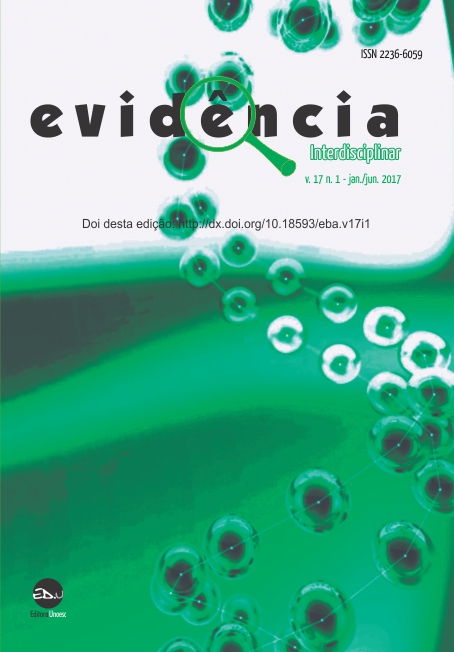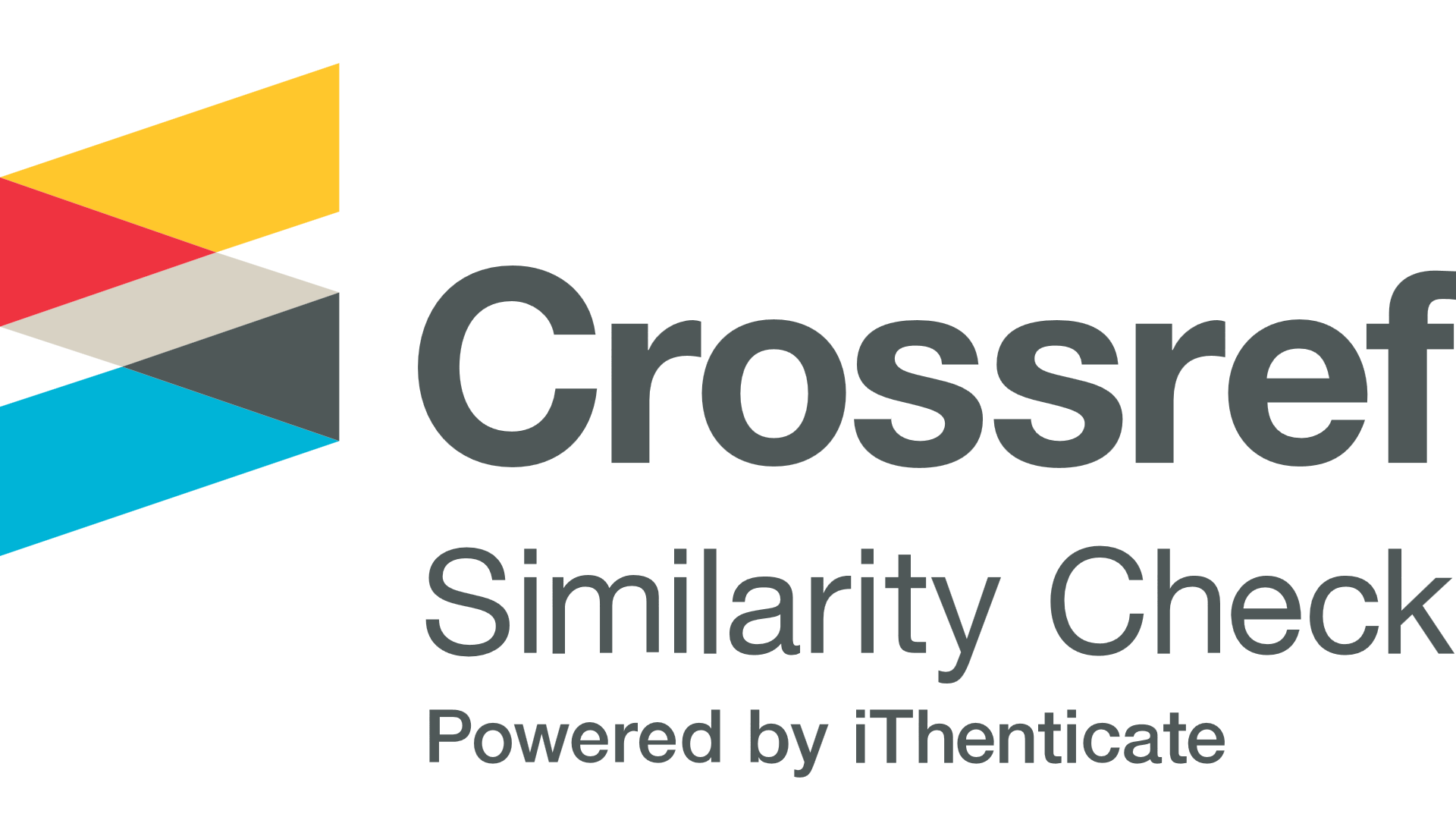Toxicity of naphthalene in the Neotropical Fish Astyanax Lacustris (Characiformes: Characidae) and Geophagus Brasiliensis (Perciformes: Cichlidae)
DOI:
https://doi.org/10.18593/eba.v17i1.12976Palavras-chave:
Comet assay, Ecotoxicology, Fish, Genotoxicity, Hormesis.Resumo
Polycyclic aromatic hydrocarbons are one of the most important organic pollutants in environmental studies. The aim of this study was to assess the naphthalene acute toxicity in two fish species, Astyanax lacustris (LLcust, 1875) and Geophagus brasiliensis (Quoy & Gaimard, 1824). The fish were exposed to naphthalene (0.005, 0.03, 0.3, and 3 mgL-1) in water and after that the piscine micronucleus test in erythrocytes, comet assay in blood, liver and gill cells, glutathione S–transferase (GST) activity in the liver, and accumulation of naphthalene in the bile were performed. The susceptibility of the two species was similar and naphthalene was not genotoxic in all tested tissues. The liver GST activity may have been responsible for less damage observed in the liver while the highest DNA damage occurred in blood cells. However, low concentrations of naphthalene in water can stimulate apparent benefits, such as less DNA damage, which would be a compensatory response to an imbalance of homeostasis. The naphthalene is absorbed and can accumulate in the gall bladder, a greater accumulation of PAH was observed in A. lacustris, while G. brasiliensis did not differ from the control. The naphthalene concentrations are not genotoxic to the tested species, although they can potentially accumulate into the body.
Keywords: Comet assay. Ecotoxicology. Fish. Genotoxicity. Hormesis.
Downloads
Referências
Brusick, D., M.S. Small, E.L. Cavalieri, D. Chakravarti, X. Ding, D.G. Longfellow, J. Nakamura, E.C. Rogan & J.A. Swenberg. 2008. Possible genotoxic models of action for naphthalene. Regulatory Toxicology and Pharmacology, 51: 43-50.
Meire, R. O., A. Azeredo & J. P. M. Torres. 2007. Aspectos ecotoxicológicos hidrocarbonetos policíclicos aromáticos. Oecologia Brasiliensis, 11 (2): 188-201.
Potin, O., C. Rafin & E. Veignie. 2004. Bioremediation of an aged polycyclic aromatic hydrocarbons (PAHs)-contaminated soil by filamentous fungi isolated from the soil. Internation Biodeterioration & Biodegradation, 54 (1): 45-52.
PUBLIC HEALTH SERVICE. 2010. Toxicological profile for naphthalene, 1-methylnaphtalene, and 2-methylnaphthalene; U.S Department of health and human services. Agency for toxic substances and diseases registry. Available at: <http://www.atsdr.cdc.gov/toxprofiles/tp.asp?id=240&tid=43>. Last accessed: sept 2010.
Bischoff, N. 2004. Naphthalene. Clinical Veterinary Toxicology. Plumlee, K.H., ed. Mosby: St Louis, MO, 163-164.
Navas, J.M. & H. Segner. 2000. Antiestrogenicity of B-naphthoflavone and PAHs in cultured rainbow trout hepatocytes: evidence for a role of the arylhydrocarbon receptor. Aquatic Toxicology, 51: 79-92.
Teles, M., M. Pacheco & M. A. Santos. 2003. Anguilla anguilla L. liver ethoxyresorufin O-deethylation, glutathione S-transferase, erythrocytic nuclear abnormalities, and endocrine responses to naphthalene and B-naphthoflavone. Ecotoxicology and Environmental Safety, 55: 98-107.
Mackey, A.P. & M. Hodgkinson. 1996. Assessment of the impact of naphthalene contamination on mangrove fauna using behavior bioassays. Archives of Environmental Contamination and Toxicology, 56: 279-286.
Lins, J.A.P.N., P.G. Kirschnik, V.S. Queiroz & S.M. Cirio. 2010. Uso de peixes como biomarcadores para monitoramento ambiental aquático. Revista Acadêmica de Ciências Agrárias e Ambientais, 8 (4): 469-484.
Pimpão, C.T., A.R. Zampronio & H.C.S. ASSIS. 2007. Effects of deltamethrin on hematological parameters and enzymatic activity in Ancistrus multispinis (Pisces, Teleostei). Pesticide Biochemistry and Physiology, 88: 122-127.
Al-Sabti, K. 1991. Handbook of genotoxic effects and fish chromosomes. J. Stefan Institute, P.O.Box 100, Jamova 39. Ljubljana.
Melancon, M.J. & J.J. Lech. 1978. Distribution and elimination of naphthalene and 2-methylnaphthalene in rainbow trout during short and long-term exposures. Archives of Environmental Contamination and Toxicology, 7: 207-220.
Heddle, J.A. 1973. A rapid in vivo test for chromosome damage. Mutation Research, 18: 187-190.
Schmid, W. 1975. The micronucleos test. Mutattion Research, 31: 9-15.
Ueda, T., M. Hayashi, Y. Ohtsuka, T. Nakamura, J. Kobayashi & T. Sofuni. 1992. A preliminary study of the micronucleus test by acridine Orange fluorescent staining compared with chromosomal aberrations test using fish erythropoietic and embryonic cells. Water Science and Technology, 25: 235-240.
Carrasco, K. R., K. L. Tilbury & M.S. Myers. 1990. Assessment of the piscine micronucleus test as an in situ biological indicator of chemical contaminant effects. Canadian Journal of Fisheries and Aquatic Sciences, 47: 2123 -2136.
Singh, N.P., M.T. McCoy, R.R. Tice & E.L. Schneider. 1988. A simple technique for quantification of low levels of DNA damage in individual cells. Experimental Cell Research, 175: 184-191.
Ferraro, M.V.M., A.S. Fenocchio, M.S. Mantovani, C. Oliveira Ribeiro & M.M. Cestari. 2004. Mutagenic effects of tributyltin and inorganic lead (Pb II) on the fish H. malabaricusas evaluated using the comet assay and the piscine micronucleus and chromossome aberration tests. Genetics and Molecular Biology, 27 (1): 103-107.
Ramsdorf, W.A., M. V. M. Ferraro, C. A. Oliveira-Ribeiro, J.R.M. Costa & M. M. Cestari. 2009. Genotoxic evaluation of different doses of inorganic lead (PbII) in Hoplias malabaricus. Environmental Monitoring and Assessment, 158: 77-85.
Keen, J.H., W.H. Habig & W.B. Jakoby. 1976. Mechanism for several activities of the glutathione S-transferase. Journal of Biological Chemistry, 251: 6183-6188.
Hanson, N., S. Persson & A. Larsson. 2009. Analyses of perch (Perca fluviatilis) bile suggest increasing exposure to PAHs and other pollutants in a reference area on the Swedish Baltic coast. Journal of Environmental Monitoring, 11: 389-393.
Kayal, S. I. & D. W. Connel. 1989. Occurrence and distribution of polycyclic aromatics hydrocarbons in surface sediments and water from the Brisbane river estuary. Estuarine, Coastal and Shelf Science, 29: 473-487.
Smith, J. D., J. Bagg & I. Wrigley. 1991. Extractable polycyclic hydrocarbons in water from rivers in southeastern Australia. Water Research, 25: 1145-1150.
Fenech, M. 2000. The in vitro micronucleus technique. Mutation Research, 455: 81-95.
Tavares-Dias, M. & F.R. Moraes. 2004. Hematologia de peixes teleósteos. Ribeirão Preto: M. Tavares-Dias, pp. 144. il.
Disner, G.R., M.V. Rocha & G.B. Miranda. 2011. Avaliação da atividade mutagênica do Roundup em Astyanax altiparanae (Chordata, Actinopterygii). Evidência, 11 (1): 33-42.
Ghisi, N.C. & M.M. Cestari. 2013. Genotoxic effects of the herbicide Roundup in the fish Corydoras peleatus (Jenyns 1842) after short-term, environmentally low concentration exposure. Environmental Monitoring and Assessment, 185 (4): 3201-3207.
Winter, M.J., L.C.J. Ellis & T. H. Hutchinson. 2007. Formation of micronuclei in erythrocytes of the fathead minnow (Pimephalesprometas) after acute treatment with mitomycin C or cyclophosphamide. Mutation Research- Genetic Toxicology and Environmental Mutagenesis, 629 (2): 89-99.
Bücker, A., W, Carvalho & J.A. Alves-Gomes. 2006. Avaliação da mutagênese e genotoxicidade em Eigenmannia virescens (Teleostei: Gymnotiformes) expostos ao benzeno. Acta Amazonica, 36 (3): 357-364.
Schreiner, C.A. 2003. Genetic toxicity of naphthalene: a review. Journal of Toxicology and Environmental Health, 6 (2): 161-183.
Degraeve, G.M., R.G. Elder, D.C. Woods & H.L. Bergman. 1982. Effect of naphthalene and benzene on Fathed Minnows and Rainbow Trout. Archives of Environmental Contamination and Toxicology, 11: 487-490.
INTERNATIONAL AGENCY FOR RESEARCH ON CANCER – IARC. 2002. Monographs on the evaluation of carcinogenic risks to human; International Agency for Research on Cancer, World Health Organization: Lyon, France, 367-435.
Calabrese, E.J. & L.A. Baldwin. 2003. Hormesis: The Dose-Response Revolution. Annual Review of Pharmacology and Toxicology, 43: 175-197.
Calabrese, E.J. 2008. Hormesis: why it is important to toxicology and toxicologists. Environmental Toxicology and Chemistry, 27 (7): 1451-1474.
Calabrese, E.J. & L.A. Baldwin. 2002. Defining hormesis. Human & Experimental Toxicology, 21: 91-97.
Chapman, P.M. 2001. The implications of hormesis to ecotoxicology and ecological risk assessment. Human & Experimental Toxicology, 20: 499-505.
Eisele, G.R. 1985. Naphthalene distribuition in tissues of laying pullets, swine, and dairy cattle.Bull. Archives of Environmental Contamination and Toxicology, 34: 549-556.
Varanasi, U., M. Uhler & S. I. Stranahan. 1978. Uptake and release of naphthalene and it’s metabolites in skin and epidermical mucus of salmonids. Toxicology and Applied Pharmacology, 44: 277-289.
Domingos, F.X.V., C.A.O. Ribeiro, É. Pelletier & C. Rouleau. 2011. Tissue distribuition and depuration kinetics of waterborne 14C-labeled light PAHs in Mummichog (Fundulus heteroclitus). Environmental Science & Technology, 45: 2684-2690.
Gervais, J., B. Luukinen, K. Buhl & D. Stone. 2010. Naphthalene Technical Fact Sheet. National Pesticide Information Center, Oregon State University Extension Services. Date reviewed. Available at: <http://npic.orst.edu/factsheets/naphtech.pdf>. Last accessed: August, 2013.
Southworth, G.R. 1979. The role of volatilization in removing polycyclic aromatic hydrocarbons from aquatic environments. Bulletin of Environmental Contamination and Toxicology, 21: 507-514.
CETESB- Companhia Ambiental do Estado de São Paulo. 2011. Ficha de Informação de Produto Químico- NAFTALENO. São Paulo: Relatórios/Secretária do Meio ambiente, 2010. Available at: http://www.cetesb.sp.gov.br/Emergencia/produtos)ficha_completa1.asp?consulta=NAFTALENO>. Last accessed: may, 2011.
Santos, T.C.A., P.V. Ngan, M.J.A.C.R. Passos & V. Gomes. 2006. Effects of naphthalene on metabolic rate and ammonia excretion of juvenile Florida pompano, Trachinotus carolinus. Journal of Experimental Marine Biology and Ecology, 335: 82-90.
Feltes, P.K., L.A. Piloto, E.P. Rico, D.B. Rosemberg, R.D. Dias, M.R. Bogo & C.D. Bonan. 2008. Padronização do ensaio da atividade da Na+K+-ATPase em membranas cerebrais de zebrafish (Danio rerio) e influência da exposição ao etanol. IX Salão de Iniciação Científica, PUCRS, 2008. Available at: <http://www.pucrs.br/research/salao/2008-IXSalaoIC/index_files/main_files/trabalhos_sic/ciencias_biologicas/bioquimica/61659.pdf>. Last accessed: september, 2013.
Ramsdorf, W.A. 2011. Avaliação da toxicidade dos compostos fipronil, nitrato de chumbo e naftaleno em peixes. PhD Theses. Universidade Federal do Paraná, Curitiba, 178 p.
Roubal, W.T., T. K. Collier & D.C. Malins. 1977. Accumulation and metabolismo f carbon-14 labeled benzene, naphthalene, and anthracene by young Coho Salmon (Oncorhynchus kisutch). Archives of Environmental Contamination and Toxicology, 5: 513-529.
Simonato, J. D., A. C. L Albinati & C. B. R. Martinez. 2006. Effects of the water soluble fraction of diesel fuel oil on some functional parameters of the neotropical freshwater fish Prochilodus lineatus Valenciennes. Bulletin of Environmental Contamination and Toxicology, 76: 505-511.
Santos, D.M., G.S. Santos, M.M. Cestari, C.A.O. Ribeiro, H.C.S. Assis, F. Yamamoto, I.C. Guiloski, M.R.R. Marchi & R.C. Montone. 2014. Bioaccumulation of butyltins and liver damage in the demersal fish Cathorops spixii (Siluriformes, Ariidae). Environmental Science and Pollution Research, 21, 3166-3174.
Modesto, K. A. & C. B. R. Martinez. 2010. Roundup® causes oxidative stress in liver and inhibits acetylcholinesterase in muscle and brain of the fish Prochilodus lineatus. Chemosphere, 78: 294-299.
Almeida, J. S., P. C. Meletti & C. B. R. Martinez. 2005. Acute effects of sediments taken from an urban stream on physiological and biochemical parameters of the neotropical fish Prochilodus lineatus. Comparative Biochemistry and Physiology C, 140: 356-363.
Van Der Oost, R., J. Beyer & N.P.E. Vermeulen. 2003. Fish bioaccumulation and biomarkers in environmental risk assessment: a review. Environmental Toxicology and Pharmacology, 13: 57-149.
Monteiro, D.A., J.A. Almeida, F.T. Rantin & A.L. Kalinin. 2006. Oxidative stress biomarkers in the freshwater characid fish, Bryconcephalus, exposed to organophosphorus insecticide Folisuper 600 (methyl parathion). Comparative Biochemistry and Physiology C, 143: 141-149.
Ferrari, A., A.Venturino & A.M.P. D’Angelo. 2007. Effects of carbaryl and azinphos methyl on juvenile rainbow trout (Oncorhynchusmykiss) detoxifying enzymes. Pesticide Biochemistry and Physiology, 88: 134-142.
Downloads
Publicado
Como Citar
Edição
Seção
Licença
Declaração de Direito Autoral
Os autores mantêm os direitos autorais e concedem à Revista o direito de primeira publicação, com o trabalho licenciado simultaneamente sob uma Licença Creative Commons – Atribuição – Não Comercial 4.0 Internacional.











